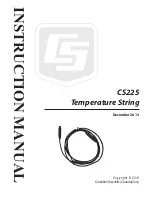
F-PI-1.0-SSC-06.04, SSC1-Version 1.08
pissc1
25
Anzahl Lastsensoren
Geben Sie hier die Anzahl der am SSC1 an-
geschlossenen Lastsensoren ein. Abhän-
gig vom gewählten Betriebsmodus können 1
bis 4 Lastsensoren ausgewählt werden.
Konfiguration Sensoreingang
Je nach Betriebsmodus werden in der
weiteren Konfiguration die entsprechen-
den Fenster aufgerufen.
Nennlast in kg
Für jeden angeschlossenen Lastsensor
muss die zugehörige Nennlast angege-
ben werden.
Überlastschaltpunkt in kg
Sobald der angegebene Grenzwert über-
schritten wird, schaltet das SSC1 das zu-
gehörige Relais ab. Das Relais wird wie-
der angesteuert wenn die konfigurierte
Nennlast (bzw. wenn Grenzwert kleiner
als Nennlast dann Grenzwert) um minde-
stens 25% für 2sec. unterschritten wird.
Der mögliche Bereich für den Überlast-
schaltpunkt ist 10...120% der konfigurier-
ten Nennlast.
Dynamik Lastsensor
gering - mittel - hoch - sehr hoch
Mit den Dynamikstufen kann das SSC1 opti-
mal an den jeweiligen Kurvenverlauf des
Lastsignals angepasst werden. Eine höhere
Dynamikstufe bedeutet, dass das Lastsignal
vom SSC1 stärker gefiltert wird und damit hö-
here Überschwinger für das Lastsignal zu-
gelassen werden. Bei geringer Dynamik wird
das Lastsignal nur gering gefiltert. Entspre-
chend schnell reagiert das SSC1 auf Verän-
derungen des Lastsignals. Der Vorgabewert
ist mittlere Dynamik.
Werden zwei Lastsensoren angeschlos-
sen, können für die Relais 3 und 4 folgen-
de Funkionen zugeordnet werden:
Teillast-Schaltpunkte
Sobald der angegebene Grenzwert über-
schritten wird, schaltet das SSC1 das zuge-
hörige Relais ab. Das Relais wird wieder an-
gesteuert wenn der Grenzwert um minde-
stens 6% für 2sec. unterschritten wird.
Schlaffseil
Wird die angegebene Abschaltschwelle
unterschritten, schaltet das SSC1 das zuge-
hörige Relais nach der eingestellen Ab-
schaltzeit ab.
Erst wenn die Wiedereinschaltschwelle
überschritten wird und die eingestellte
Wiedereinschaltzeit abgelaufen ist, steu-
ert das SSC1 das zugehörige Relais an.
Wenn Sie keine der Funktionen program-
mieren wollen, wählen Sie das
Markierungsfeld
nicht programmiert.
2
Gerätekonfiguration SSC1
Configuration of SSC1
Number of load sensors
Enter the number of load sensors
connected to the SSC1 here. Depending
on the operating mode selected, 1 to 4
load sensors can be selected
Configuration of sensor input
The windows in the following
configuration are opened depending on
the operating mode.
Rated load in kg
The corresponding rated load must be
specified for each load sensor connected.
Overload cut-off point in kg
As soon as the limit value given is exceeded
the SSC1 switches the corresponding relay
off. The relay is reactivated when the load
drops by at least 25% below the configured
rated load (or the limit load if the limit load is
lower than the rated load) for 2 secs.
The range possible for the overload cut-off
point is 10...120% of the configured rated load.
Dynamics of load sensor
low - medium - high - very high
The SSC1 can be optimally adjusted to the
individual curve shape by the dynamic steps.
A higher dynamic step means that the load
signal from the SSC1 is filtered more strongly
and thus higher overswings for the load
signal are permitted. With low dynamics, the
load signal is only slightly filtered. The SSC1
will then react to changes in the load signal
faster. The default value is medium dynamics.
If two load sensors are connected the
folllowing functions can be assigned to
relays 3 and 4:
Partial load switching points
The SSC1 switches the corresponding relay
off as soon as the limit value specified is
exceeded. The relay is reactivated if the
load drops below the limit value by at least
6% for 2 seconds.
Slack rope
If the value falls below the cut-off thresh-
hold specified the SSC1 switches the corre-
sponding relay off after the cut-off time set.
The SSC1 does not activate the
corresponding relay until the restart
threshhold is exceeded and the restart time
set has expired.
If you do not wish to program any of these
functions, select the box
not programmed.
(500 - 100.000 kg)
1100
1100
500
100
100
110
500













































